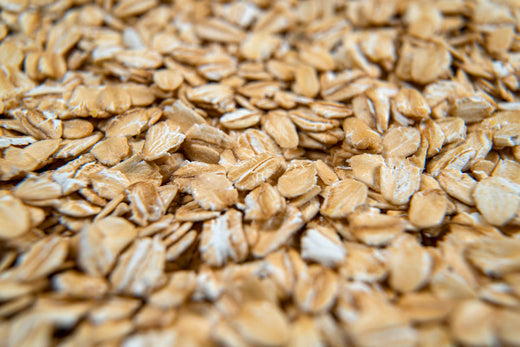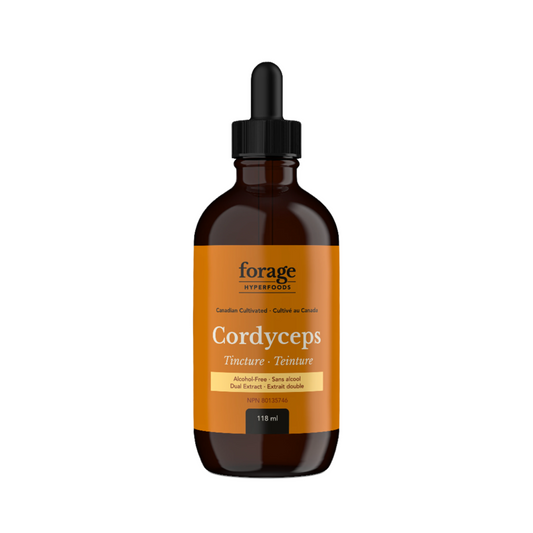
The Difference Between Cultivated and Wild Chaga
Share
Where and how Chaga grows has a big impact on its medicinal value. To reap the greatest health benefits from Chaga mushroom, it’s important to purchase Chaga from a company that harvests functional mushrooms directly from the source. Today, we’re going to discuss the difference between Chaga mycelium grown on rice and oats compared to wild-harvested Chaga so you can make a healthy and informed purchase. Here’s what you need to know.
First of all, what is Chaga?
Chaga is a fungus that, in the wild, primarily grows on birch trees in cold climates, like those found in Canada, Siberia, Scandinavia, and some parts of the United States.
Chaga is packed with antioxidants, vitamins, and minerals, making it a functional mushroom powerhouse. It’s been shown to support a strong immune system, provide anti-inflammatory benefits, support heart health, promote good digestion, and potentially play a role in cancer prevention, just to name a few. Learn about Chaga mushroom benefits in more detail in this blog post. One interesting theory is that Chaga’s many beneficial compounds may be a result of its adaptations made to withstand the cold, harsh climate it grows in.
Rice/oat-grown mycelium Chaga vs. wild-harvested Chaga
Chaga mushroom must be wild-harvested (picked in the wild and not cultivated) in order to contain all the active compounds Chaga is known for.
One study found that the immune-stimulating effects of lab-grown Chaga reached only around 50% of those of wild Chaga. Why doesn’t lab-grown Chaga produce beneficial compounds at the same levels? There are a couple of reasons. Chaga naturally grows on trees making wood their optimal food source—not grains. Chaga growing in its natural environment is able to consume its natural food source, which provides the mushroom with the nutrition and metabolites needed to produce a healthy strong fungus that’s rich in compounds that benefit human health.
Secondly, the beneficial compounds in the mushroom only form because of the parasitic relationship between Chaga and the host tree, typically birch. Take betulinic acid, for example. This is a medicinal compound found in wild-harvested Chaga that has anti-viral and anti-inflammatory properties and shows promise as a powerful anti-cancer agent. The betulinic acid found in Chaga is a derivative of betulin, a compound found in birch trees.
Some companies, on the other hand, have chosen to cultivate Chaga by growing the mycelium (or root system) of a mushroom on sterilized grain, such as brown rice or oats. Cultivated Chaga, which is grown on rice or oats, is completely void of health-promoting betulinic acid. While growing Chaga in this way drastically saves time and reduces production costs, it produces a subpar product that doesn’t come close to the potency and power of wild-harvested Chaga.
Choose true mushroom extracts
It might be surprising to learn that some “mushroom” extracts don’t contain any mushroom at all. If you purchase a product that includes “freeze-dried myceliated brown rice” in its ingredient list, you’re essentially receiving ground-up grain with a small amount of the mushroom’s roots mixed in. Not only will you be paying for myceliated grain instead of whole mushrooms, but this type of product contains very little of the beneficial Chaga compounds you’ve heard about.
Mushroom extracts should be made from only, well, mushrooms—not grains. That’s why it’s important to seek out Chaga products that source from the wild. It’s only this kind of Chaga that offers the wide array of vitamins, minerals, and antioxidants that have earned it the title of “the king of mushrooms.”
Find a trusted source for your Chaga
Purchasing Chaga mushroom from a trusted supplier is the best way to ensure its effectiveness and safety. Not all Chaga products are created equal, so be sure you’re getting yours from a company whose Chaga is organically grown, sustainably harvested, carefully extracted, and rigorously quality tested. This process checks for contaminants such as heavy metals, pesticides, microbial contamination, and gluten. If a Chaga supplement lists any ingredients like “mycelium on grain” or other funky fillers, it's best to avoid it. To reap the full potential of this fungal powerhouse, seek a Chaga extract that uses wild-harvested Chaga.
The takeaway
As you can see, Mother Nature knows best. Artificially replicating Chaga in a lab can’t offer the same health benefits of Chaga mushroom sourced from the wild. It can be alluring for companies to cut production costs and time by growing mycelium on grain, but that comes at the cost of producing a much less potent (and effective) product. Bottom line: the health benefits of rice/oat-grown mycelium Chaga vs. wild-harvested Chaga can’t compare. When searching for a Chaga extract, search for a wild-harvested product with no grains, fillers, or starch. Believe us, you’ll feel the difference.
All referenced sources are linked in the blog.



